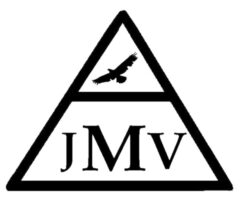Ryota Sato, Natsumi T Hamahata, Ehab G Daoud
Cite
Sato R, Hamahata TN, Daoud EG. Prone position and APRV for severe hypoxemia in COVID-19 patients: The role of perfusion. Journal Mech Vent 2020; 1(1):19-21.
Metrics
Prone position and APRV for severe hypoxemia in COVID-19 patients: The role of perfusion
Abstract
There have been confusion and contradiction on how to best manage patients with acute respiratory failure secondary to Corona virus disease-2019 (COVID-19). Recent report suggested two different phenotypes of patho-physiology (type L and type H).Type L is characterized by low elastance and low ventilation-perfusion mismatch ratio (V/Q), while type H is more consistent with the classic acute respiratory distress syndrome (ARDS) characterized by high elastance, and increased right to left shunt.
The role of perfusion deficits has been clearer with the discovery of micro and macro vascular thrombi in the lung vascular endothelium. Prone position has gained interest in research and guidelines as a maneuver capable of improving ventilation and perfusion. Airway pressure release ventilation (APRV) can theoretically improve hypoxemia due to ventilation/perfusion mismatch in patients with COVID-19 compared to other conventional strategies. From this perspective, we may have to consider perfusion as the major problem in the disease process more than just ventilation.
More studies are required to explore the role of perfusion and the different ventilatory strategies to best manage those patients.
Keywords
Airway pressure release ventilation; APRV; prone position; COVID-19; SARS-CoV-2
References
| 1.Alhazzani W, Moller MH, Arabi YM, et al. Surviving Sepsis Campaign: Guidelines on the Management of Critically Ill Adults with Coronavirus Disease 2019 (COVID-19). Crit Care Med 2020; 48(3):415-419. https://doi.org/10.1097/CCM.0000000000004363 PMID: 32224769 PMCID: PMC7176264 |
| 2 . Gattinoni L, Coppola S, Cressoni M, et al. Covid-19 Does Not Lead to a “Typical” Acute Respiratory Distress Syndrome. Am J Respir Crit Care Med 2020; 201(10):1299-1300. https://doi.org/10.1164/rccm.202003-0817LE PMid:32228035 PMCid:PMC7233352 |
| 3. Dondorp AM, Hayat M, Aryal D, et al. Respiratory Support in Novel Coronavirus Disease (COVID-19) Patients, with a Focus on Resource-Limited Settings. Am J Trop Med Hyg 2020; 102 (6):1191-1197. https://doi.org/10.4269/ajtmh.20-0283 PMid:32319424 PMCid:PMC7253105 |
| 4. Gattinoni L, Chiumello D, Rossi S. COVID-19 pneumonia: ARDS or not? Critical Care 2020; 24:154-157. https://doi.org/10.1186/s13054-020-02880-z PMid:32299472 PMCid:PMC7160817 |
| 5. Connors JM, Levy JH . Thromboinflammation and the hypercoagulability of COVID-19. J Thromb Haemost 2020; 00:1-3. https://doi.org/10.1111/jth.14849 PMid:32302453 |
| 6. Lodigiani C, Iapichino G, Carenzo L, et al. Venous and arterial thromboembolic complications in COVID-19 patients admitted to an academic hospital in Milan, Italy. Thromb Res 2020; 191:9-14. https://doi.org/10.1016/j.thromres.2020.04.024 PMid:32353746 PMCid:PMC7177070 |
| 7. Tang N, Bai H, Chen X, et al: Anticoagulant treatment is associated with decreased mortality in severe coronavirus disease 2019 patients with coagulopathy. J Thromb Haemost 2020; 18:1094-1099. https://doi.org/10.1111/jth.14817 PMid:32220112 |
| 8. COVID-19 Treatment Guidelines Panel. Coronavirus Disease 2019 (COVID-19) Treatment Guidelines. National Institutes of Health. Available at https://www.covid19treatmentguidelines.nih.gov/. Accessed July 30, 2020. |
| 9. Thachil J, Tang N, Gando S, et al. ISTH interim guidance on recognition and management of coagulopathy in COVID-19. J Thromb Haemost. 2020; 18(5):1023-1026. https://doi.org/10.1111/jth.14810 PMid:32338827 |
| 10. Bikdeli B, Madhavan MV, Jimenez D, et al. COVID-19 and thrombotic or thromboembolic disease: implications for prevention, antithrombotic therapy, and follow-up. J Am Coll Cardiol 2020; 75(23):2950-2973. https://doi.org/10.1016/j.jacc.2020.04.031 PMid:32311448 PMCid:PMC7164881 |
| 11. Marini JJ, Gattinoni L. Management of COVID-19 Respiratory Distress. JAMA 2020; 32 3(22):2329-2330. https://doi.org/10.1001/jama.2020.6825 PMid:32329799 |
| 12. McAuley D, Giles S, Gao F: Effect of prone position on pulmonary vascular permeability in acute respiratory distress syndrome. Critical Care 2001; 5(Suppl 1):031. https://doi.org/10.1186/cc1099 PMCid:PMC3333219 |
| 13. APRV network. Available at https://www.aprvnetwork.org. Accessed July 30, 2020. |
| 14. Daoud EG, Farag HL, Chatburn RL: Airway pressure release ventilation: what do we know? Respir Care 2012; 57(2):282-292. https://doi.org/10.4187/respcare.01238 PMid:21762559 |
